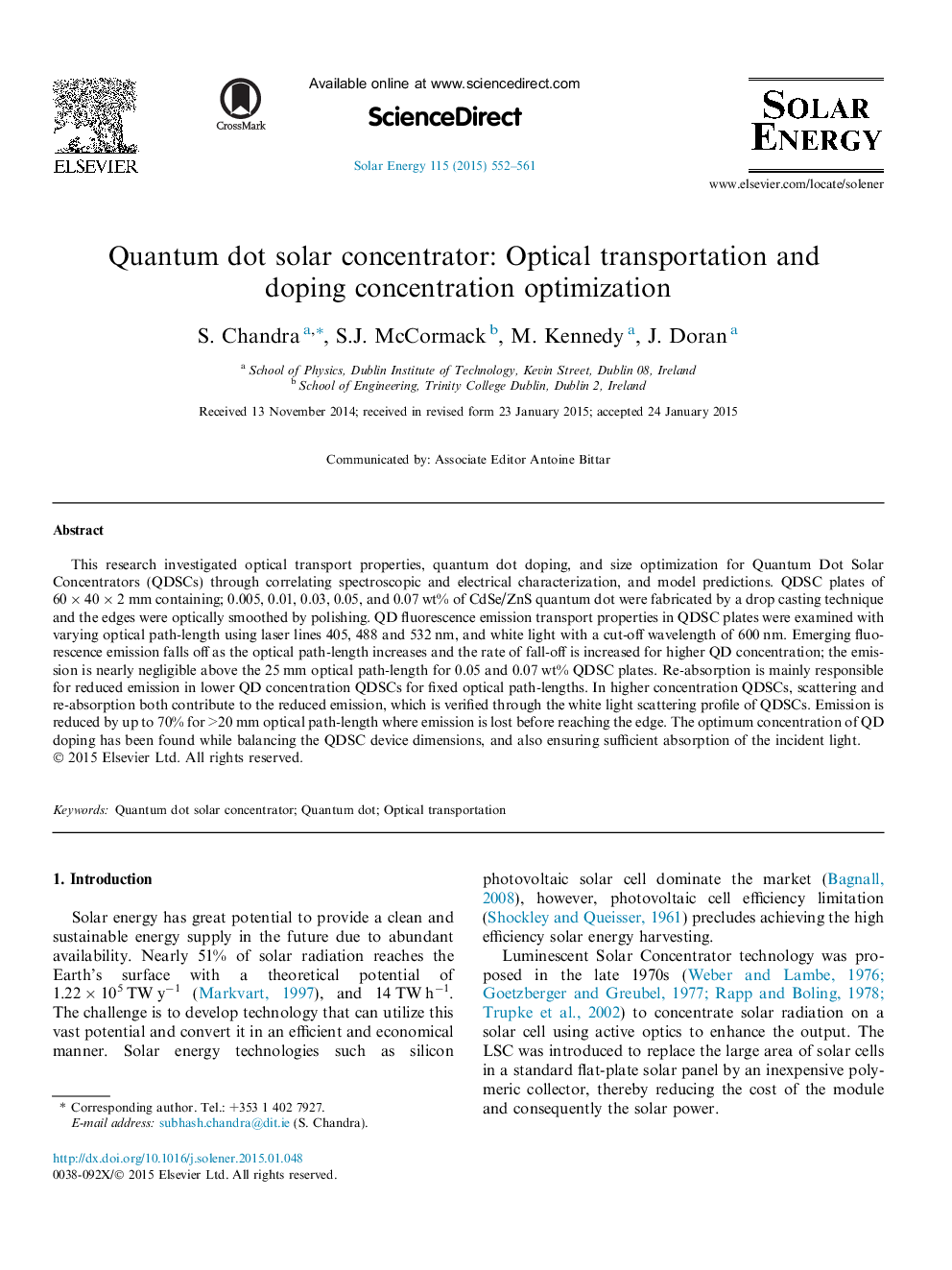| Article ID | Journal | Published Year | Pages | File Type |
|---|---|---|---|---|
| 7938076 | Solar Energy | 2015 | 10 Pages |
Abstract
This research investigated optical transport properties, quantum dot doping, and size optimization for Quantum Dot Solar Concentrators (QDSCs) through correlating spectroscopic and electrical characterization, and model predictions. QDSC plates of 60Â ÃÂ 40Â ÃÂ 2Â mm containing; 0.005, 0.01, 0.03, 0.05, and 0.07Â wt% of CdSe/ZnS quantum dot were fabricated by a drop casting technique and the edges were optically smoothed by polishing. QD fluorescence emission transport properties in QDSC plates were examined with varying optical path-length using laser lines 405, 488 and 532Â nm, and white light with a cut-off wavelength of 600Â nm. Emerging fluorescence emission falls off as the optical path-length increases and the rate of fall-off is increased for higher QD concentration; the emission is nearly negligible above the 25Â mm optical path-length for 0.05 and 0.07Â wt% QDSC plates. Re-absorption is mainly responsible for reduced emission in lower QD concentration QDSCs for fixed optical path-lengths. In higher concentration QDSCs, scattering and re-absorption both contribute to the reduced emission, which is verified through the white light scattering profile of QDSCs. Emission is reduced by up to 70% for >20Â mm optical path-length where emission is lost before reaching the edge. The optimum concentration of QD doping has been found while balancing the QDSC device dimensions, and also ensuring sufficient absorption of the incident light.
Keywords
Related Topics
Physical Sciences and Engineering
Energy
Renewable Energy, Sustainability and the Environment
Authors
S. Chandra, S.J. McCormack, M. Kennedy, J. Doran,
